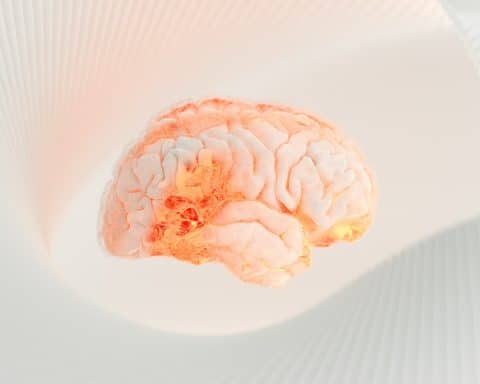 Richard Armitage is a GP and Honorary Assistant Professor at the University of Nottingham’s Academic Unit of Population and Lifespan Sciences. He is on X: @drricharmitage
Richard Armitage is a GP and Honorary Assistant Professor at the University of Nottingham’s Academic Unit of Population and Lifespan Sciences. He is on X: @drricharmitage
Why is there something rather than nothing? Does God exist? What is the meaning of life? Do we have free will? Where are all the aliens? While these questions have been the focus of intense philosophical inquiry for millennia, it is another of the Big Questions that has captivated my attention of late – what is consciousness?
While various conceptualisations of consciousness have been proposed, they all share the central characteristic of subjective awareness. In other words, there is something that it is like to be conscious – there is something it is like to be me, to be you, and to be running 20 minutes late after a 5-problem appointment. That something is itself what is meant by ‘consciousness.’
…there is something that it is like to be conscious – there is something it is like to be me, to be you, and to be running 20 minutes late after a 5-problem appointment.
Understanding the mechanisms that underlie subjective awareness has so far proven to be an utterly intractable problem. To divide the challenge into smaller subunits, the Australian philosopher of mind and cognitive scientist David Chalmers coined the terms ‘Hard Problem’ and ‘Easy Problem’ of consciousness in his influential 1995 paper.1 For Chalmers, the Hard Problem is explanatory – to explain why human beings (and, presumably, other organisms) have qualia (subjective, phenomenal experiences). This is in contrast to the Easy Problem, which is descriptive – to describe the neural correlates of consciousness, by mapping out what the brain is functionally doing at time that we have certain conscious experiences. The Hard Problem is categorically different to the Easy Problem such that, even if we had a complete understanding of the brain’s functioning, an outstanding question would remain – why is the performance of these functions accompanied by subjective experience? Even a complete understanding of the physics of lights, the human retina, and the visual cortex would not be sufficient to explain my subjective experience of seeing redness when I gaze at the curtains before me. Chalmers recognises that there is nothing objectively easy about the Easy Problem, and that the scientific knowledge and engineering feats that are required to map the neural correlates of consciousness (such as fMRI scanners) are both advanced and impressive. But he recognises the Easy problem as such only relative to the Hard Problem, on which we have made arguably no progress whatsoever for millennia.
My reading about Chalmers’ proposal of two distinct Problems of consciousness sparked an analogy in the domain of human health (so much for the question of free will). At least for me, this formulation of the overall challenge posed by human health distinguishes the area on which we have made great progress from that which is increasingly lagging behind, and helps to identify where our efforts might most productively be directly. Allow me to introduce the Easy and Hard Problems of Health.
Allow me to introduce the Easy and Hard Problems of Health.
The Easy Problem of Health is a technical problem. Many aspects of medicine and healthcare involve coaxing a patient’s physiological parameters – once they have deviated out of their normal ranges – back into the limits that are, on population scales, considered to be normal and, therefore, healthy. Blood pressures, thyroid stimulating hormone levels, and estimated glomerular filtration rates are all examples of physiological parameters that GPs comfortably wield the prescription pad to tease back into their normal ranges if they dare to escape them. Similarly, clinical examination often reveals the underlying cause of a troublesome symptom – such as basal crackles, a bulging tympanic membrane, and a positive Dix-Hallpike – for which an immediate treatment is often available in general practice to neutralise the cause and eradicate the symptoms (if it is not, then surgeries and complex pharmaceutical options can often be offered in secondary care to restore normality). In addition, self-reported symptoms that lack both an objectively measurable physiological or biochemical marker and a hard examination finding – such as pain, low mood, and symptoms of irritable bowel – can also be addressed with lifestyle modifications, pharmacological options, or psychological interventions.
Accordingly, while the case is clearest with the management of quantitative physiological results, many of the activities of healthcare practitioners resemble those of technicians, with the goal to tame any deviant value and cajole it back within its normal parameter. This is the Easy Problem of Health, which we have, in many domains of contemporary medicine, impressively mastered. I humbly acknowledge that there is nothing objectively easy about the Easy Problem of Health, and recognise that an enormous number of individual miracles have and continue to occur for me to enjoy the enormous range of safe and effective treatments in the consulting room. A huge number of careers, and great time, finance and regulatory infrastructure, were required to invent, test, approve and monitor each of the interventions that I am fortunate to inherit in my clinical arsenal. Nothing was easy about the creation of these tools, but their success is demonstrated by their deployment in routine clinical practice being exactly that – easy. The enormous determination that was required to make nitrofurantoin available as an option for UTI is not undermined when I successfully use it – with profound ease – to treat such an infection (in fact, this ease reflects the antibiotic’s safety and effectiveness for this indication, and the regulatory framework in which it is prescribed, and is therefore a testimony to the work done by others such that GPs can deploy it so readily). Accordingly, the Easy Problem of Health is only so relative to the Hard Problem of Health.
Why does a person become unwell in the first place, how can ill-health be prevented, and what (if anything) ought to be done to enact this prevention?
In contrast, the Hard Problem of Health is a philosophical problem. While we can unleash sophisticated technologies to correct deviations from a healthy equilibrium, the Hard Problem is concerned with why these aberrations occur in the first place. Similar to Chalmers’ formulation of the two Problems of consciousness, the Hard Problem of Health is categorically different to the Easy Problem of Health – even if we had a total understanding of physiology and a complete arsenal to correct deviations from ‘healthy,’ outstanding questions would remain: Why does a person become unwell in the first place, how can ill-health be prevented, and what (if anything) ought to be done to enact this prevention? This Problem invokes an enormous number of influencing variables including individual factors (such as genetics, personality traits, and early childhood experiences), social determinants (such as education, nutrition, and employment), and political features (such as the nation’s security, economy, and welfare system). This is what makes the Hard Problem so. It is possible to imagine a society in which each individual’s physiological parameters are tightly maintained within their normal limits through a personalised amalgam of medications, surgeries and psychological interventions. For the Easy Problem, such a society is considered healthy, but this absurdity only demonstrates more starkly the challenge posed by the Hard Problem.
As we continue to gain mastery over the Easy Problem, both the severity and urgency of the Hard Problem become increasingly apparent (the 37.9% increase in total Department of Health and Social Care real-terms spending from 2010/11 [£131.8 billion] to 2022/23 [£181.7 billion] is a simple indicator of this).2 While the additional benefits of any further progress on the Easy Problem would be warmly received, the marginal returns of such endeavours have long been diminishing, while relative neglectedness of the Hard Problem continues to compound. Addressing the Hard Problem requires us to elevate and prioritise discussions regarding society, values, duties, and what it means to be healthy. It necessitates the public, philosophers, and those involved with the Easy Problem to formulate a vision towards which we can all purposefully strive. And it calls on us to do so in a voluntary, collaborative, and responsible manner that envisions a better future without sacrificing today’s flourishing. That sounds Hard. But hard things are often worth doing.
Deputy Editor’s note: See also https://bjgplife.com/the-world-health-organizations-definition-of-health-a-baby-to-be-retrieved-from-the-bathwater/ by Richard Armitage and https://bjgplife.com/looking-in-and-looking-out/ by Ben Hoban as well as: Misselbrook D, W is for Wellbeing and the WHO definition of health,
References
- D Chalmers. Facing up to the problem of consciousness. Journal of Consciousness Studies 1995; 2(3): 200-219
- The King’s Fund. The NHS budget and how it has changed. 20 September 2023. https://www.kingsfund.org.uk/insight-and-analysis/data-and-charts/nhs-budget-nutshell#how-has-spending-on-the-nhs-changed-over-time? [accessed 11 April 2024]
Featured Photo by Kenny Eliason on Unsplash







[…] Deputy Editor’s note, see also https://bjgplife.com/medicine-right-idea-wrong-science-should-critical-realism-be-the-new-science-of-medical-practice and https://bjgplife.com/the-easy-and-hard-problems-of-health […]